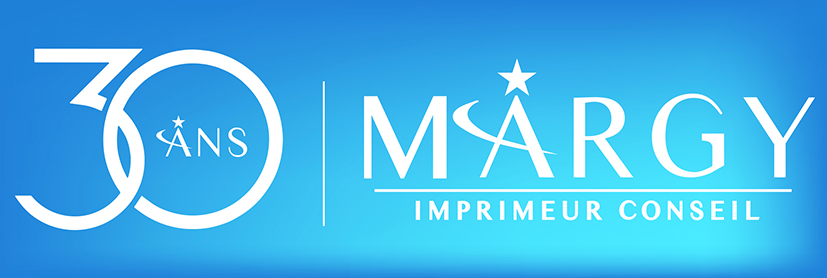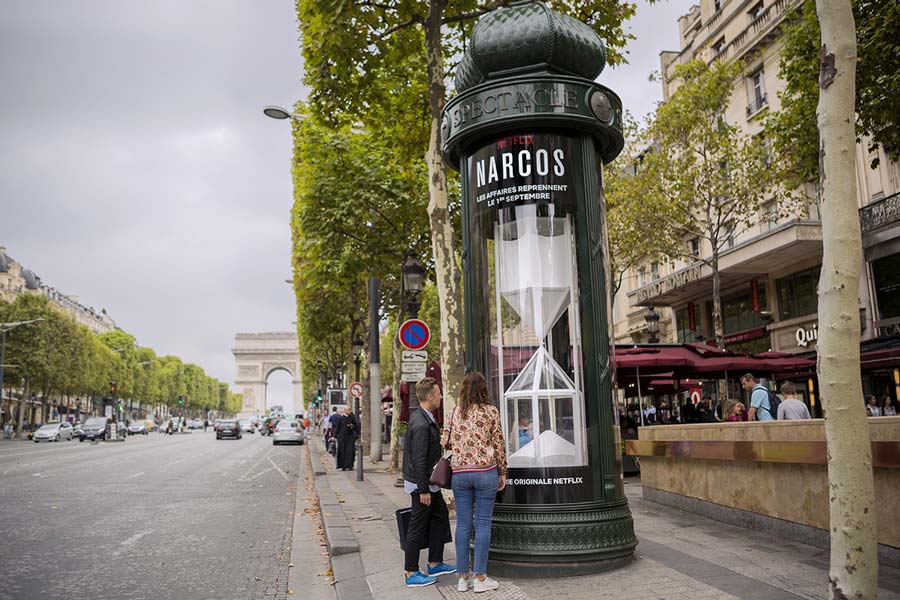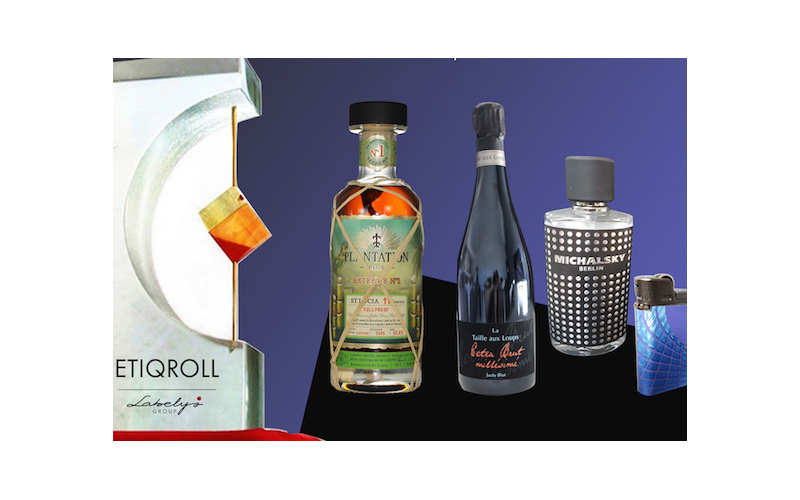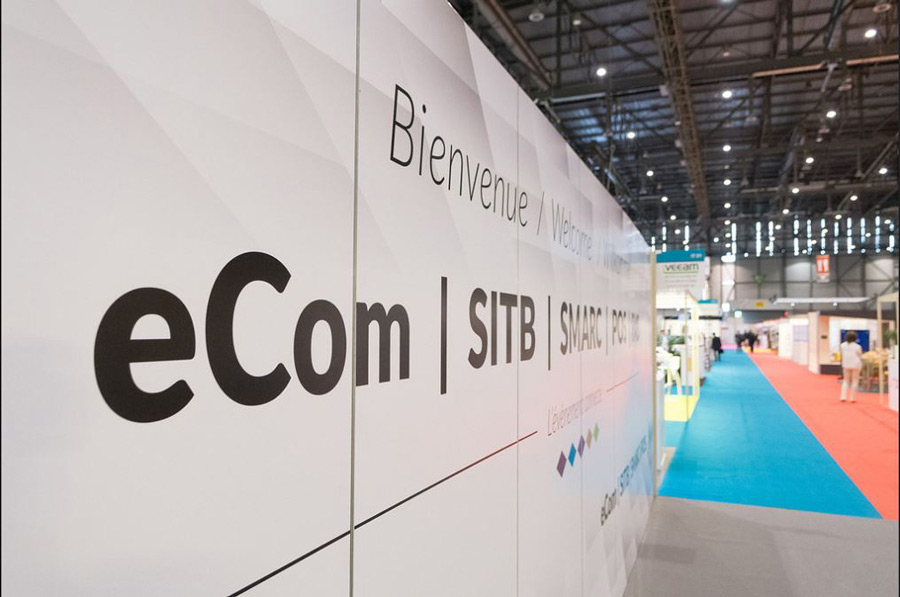Addressed advertising mail: a traditional marketing technique that's still very much in vogue
At a time when digital is establishing itself as an essential means of communication, addressed advertising mail, or CPA, still has a bright future ahead of it.
Indeed, addressed advertising mail remains a preferred means of communication for advertisers. The recipients, the consumers, appreciate this personalised communication. It's a satisfaction that makes it easier for them to go to the shop and make a purchase.
But what really is addressed advertising mail? Here's a quick look at a communication technique that never goes out of fashion.
How best to use addressed advertising mail?
Addressed advertising mail remains a favourite means of communication for consumers in France. Personalised, CPA mail easily triggers the act of buying, making consumers feel privileged.
This is an advertising message sent by the advertiser, via a postal operator, directly to the home of a prospective customer. The letter specifies the customer's exact name and address. A totally personalised approach.
Addressed advertising mail is part of traditional direct marketing. To be effective, however, it requires a qualified, up-to-date database. A substantial budget is also allocated to the postage costs, which account for almost half of the total cost of the operation.
What are the results of addressed advertising mail?
A study carried out in 2011 by SOFRES highlighted that CPA does indeed give the recipient the feeling of being directly concerned by the message. The company thus appears more human, more accessible, and therefore closer to the consumer. This means of communication also attracts consumers' attention and encourages them to make a purchase. In fact, a subsequent study carried out in 2015 by CSA-Cawi showed that 85% of French people went to a regular shop after receiving addressed advertising mail.
Addressed advertising mail is therefore a powerful medium that needs to be integrated into an effective marketing strategy.
Which operators for CPA?
Various postal operators distribute addressed advertising mail in France.
Among the best known are Adrexo and Mediapost. Each operator must hold a postal licence issued by ARCEP.
The advantage of these different service providers is undoubtedly the ability to geolocate mailings. In fact, it is possible to fine-tune the distribution zone for communication operations. This enables advertisers to communicate accurately and reliably. In this way, it is possible to target a particular consumer, based on their choices, interests and average shopping basket.
These service providers can also offer a customer database for sale or hire.
Advertisers can monitor their mailings in real time, as most distributors are equipped with PDAs.
A dense competitive landscape
Advertisers opting for the addressed mailing strategy need to stand out from the competition. The envelope is therefore a key element. It is the first impression that will be given to the prospect. We'll opt for a specific format, a particular catchphrase, an original background, etc. Next, the context is important. A campaign targeted at a specific period is bound to be more effective (Valentine's Day, sales, Christmas, etc.).
Addressed advertising mail, far from being left behind by the digital giants, still has a bright future ahead of it!
Other articles to read :
- Essential media for successful communication
- Personalised printed paper: an effective marketing argument
The corporate book, the digital marketing solution
As a company director, your aim is to design a company book. This project must be in line with your communication strategy. The result must reflect your desire for your company to be recognised as a benchmark in your sector of activity.
What impact will a company book have on your business?
Considered a genuine means of communication, a company book guarantees your positioning. It also helps your business to grow.
This communication tool is essential for a multi-channel strategy, an undeniable advantage in relations with your prospects and customers, employees and suppliers.
Publishing this book gives you the opportunity to present an object to everyone you meet. It will symbolise your desire to communicate and share the crucial points of your know-how.
Far from being a simple internal and external physical medium, a company book gives legitimacy to its creator. It gives you greater visibility and a broader aura. It sets you apart from the competition.
Create a story that highlights your expertise and field of activity. The corporate book adds significant value to your business, particularly through storytelling.
Creating your company book
This medium has the advantage of presenting your expertise in a well-argued and substantiated way. Its aim is to convince the reader to choose you over your competitors.
Writing a business book cannot be improvised. That's why it's important to contact a marketing professional to do the groundwork. He or she will gather all the data and key points for a faithful reconstruction.
And it's important to find the right publishing house. The publisher must specialise in communications. The publisher can guide you through design, editing and publication.
A suitable contract must be chosen for publishing. There are two solutions:
- A contract for publication on a publisher's account. If you are assessed as an author, you will opt for this type of contract. Note that publication does not necessarily mean distribution in bookshops. And the answer may be a long time coming.
- An author's publisher, with whom you will sign a contract. This type of contract is not as regulated as the previous one. In order to be published, you will be paid. The publishing house may help you with the writing and put you in touch with a journalist or writer.
The design stages
As the marketing medium of choice, your corporate book should focus on your expertise. Don't hesitate to contact a professional if you want a book that reflects your expertise. Make sure you choose the number of pages, photos (colour or black and white), illustrations, format, etc. carefully.
Choosing professional contributors is an important step. Choose an available collaborator, a journalist in particular for archive research and interviews, and opt for an expert photographer.
Graphic design is another stage, including the mock-up of the cover and the inside of the book. The cover corresponds to precise communication codes.
Finally, the printing of your corporate book needs to be considered from the outset. Contact printers for a quote.
The e-book solution for your company book may also be considered. Remember to include a format for e-readers.
Other articles to read :
- 5 essential communication assets for any new company
- Your company's annual report: an assessment of your good health, a brand image to maintain
New areas to discover at FESPA 2018
The FESPA shows highlight excellence in printing and signage. At these shows, quality prints are rewarded, as are the people who have contributed to the creativity and production of these projects.
This international event brings together 37 national associations. This year, FESPA 2018 will be held at Messe Berlin in Germany, from Tuesday 15 to Friday 18 May.
This eagerly awaited show is expected to attract some 18,000 visitors this year, with more than 700 exhibitors. The latest innovations in digital printing, textile printing and screen printing will be on show.
For this 2018 edition, some new features are expected. One in the digital printing of corrugated board, and the other in textile printing.
Opportunities in digital corrugated printing
FESPA 2018 will feature a new experimental area: the Digital Corrugated Experience. This is an area designed to highlight the benefits of digital printing for corrugated packaging, and retail display applications.
The Digital Corrugated Experience presents all the elements involved in printing corrugated materials: material handling, substrates, consumables (primer, inks, coatings and varnishes), workflow solutions, digital printing technologies and finishing. The idea behind this space is to encourage printers and converters to discover the opportunities offered by digital printing on corrugated board. The aim is for professionals to enhance their offer.
A new experience in textile printing
The second new feature to be discovered at FESPA 2018 is Print Make Wear. This area is exclusively dedicated to fashion textiles, printed garments and accessories. It is designed as a replica of a factory dedicated to ephemeral fashion. The space has a real educational dimension. Print Make Wear takes the form of a factory, highlighting every stage in the production process, from design to the final product. This year, the new centre will feature a screen-printing carousel, washing and drying equipment, direct digital printing, cutting and sewing solutions, and welding and embellishment solutions.
This new space demonstrates the growing importance of digitally printed textiles to specialist printers. In fact, to date, the area dedicated to textiles occupies four of the show's ten halls.
Printed decor on the rise
The 2018 edition of FESPA is also showcasing the various developments in the printed décor sector, with Printeriors Showcase in particular. Printeriors Showcase is a large space in which visitors can immerse themselves. The approach is primarily educational, as visitors can explore and interact with printed objects as they wish. The idea is to highlight the importance of printed decors in the domestic and hospital worlds.
The Berlin edition welcomed projects until the end of January 2018. The judges will decide on the projects at the end of March. The winners will be announced at the FESPA gala dinner in May.
Related articles
- New York hosts the new edition of Pentawards 2018
- E-commerce breathes new life into carton packaging
C!Print Lyon 2018: More than satisfactory results!
C!Print 2018 was held in Lyon from 6 to 8 February. A true benchmark for the graphic arts and visual communications industries, it was an opportunity for all the players in these sectors to get together.
Halls 1 & 2 at Lyon Eurexpo welcomed an impressive number of guests over three days. A total of 13,706 visitors came to this major event for the print industry. This represents an increase of 4.17% on last year.
Diverse visitor profiles
C!Print 2018 gave 280 exhibitors the opportunity to showcase their expertise. Despite the diversity of visitor profiles, there was a clear dominance of manufacturers and distributors of printing equipment and media.
The advertising industry was also strongly represented, with large-format advertising the most represented sector. Urban billboards were the main target audience. Outside the advertising sector, the main players involved in the exhibitions were also present. The print sector alone (large and small format printing) accounted for almost 43% of all visitors. This just goes to show the interest shown in the show by the various players in theprinting industry.
Further proof of the interest shown in C!print is the fact that 11.07% of the visitors came from abroad. In all, 57 countries were represented at the show.
The economic stakes
The paper industry still has a bright future ahead of it. Almost half the visitors to the show were interested in investing in a printing machine. And while it's true that paper is still enjoying good press, it's also true that it's not the only print sector to be doing well. Textiles and screen printing are linked to almost half of these machine requests. This is particularly true of embroidery, which accounted for 9.3% of the requests for printing machines.
The Plug&Play workshop was dedicated to textile printing, screen printing and transfer printing. Numerous inspiring demonstrations took place to introduce the techniques to the general public. Participants were treated to laser engraving on pens, printing under glass, transfer printing on bags and t-shirts, and digital embroidery on caps.
The C!Sign Hub and illuminated communication
Leading players in the signage market were able to demonstrate their expertise at the show. The C!Sign Hub provided an opportunity for live demonstrations of outdoor illuminated signage. This was an opportunity for interested parties to keep abreast of innovations and trends in the sector. Visitors were also treated to sign lettering sessions. Domino Sign, a company specialising in LED lighting systems, was on hand at the hub to provide these demonstrations.
Numerous live tutorials were given to help the public discover the many techniques for installing sign lighting.
656 éditions, which organised C!Print 2018, can be proud of the show's success. This augurs well for the next show, to be held from 5 to 7 February 2019 in Halls 1 & 2 of Eurexpo Lyon.
Other articles to read :
- The prints winners of the 4th Grand Prix de la communication extérieure
- E-commerce breathes new life into carton packaging
What if the paper newspaper wasn't dead?
For a decade now, paper newspapers have been facing stiff competition from digital media. This applies not only to news papers, but also to special-interest magazines. The advent of social networks and the democratisation of broadband have dealt the industry a further blow. Compared with 2016, for example, French periodicals fell by 2.3% in the first half of 2017, according to IDEP. The ACPM predicted the same drop a year earlier.
However, there is still a glimmer of hope. Paradoxically, print remains the leading source of revenue for French publishers. How can we understand this trend, and what are the prospects for print magazines?
Competition from digital
It's no secret that print is facing competition from digital media. Quite simply, how many French newspapers don't offer an edition on their website? A newspaper like Les Echos offers its articles on the internet in a premium version, with 2 articles available for free consultation per month. Many magazines have made the digital transition and developed relevant business models. More generalist editions such as Le Figaro offer freemium access, with free articles and exclusive paid content. This includes the option of receiving a digital copy of the newspaper before publication.
The key business models
The ecological situation has not helped the paper publishing business. Eco-responsible printing means investing in environmentally-friendly paper that costs twice as much as conventional paper. Against this backdrop, a number of publishing companies have opted for a business model based on online advertising or paid content. This is the case with Médiapart, which offers its articles exclusively to paying subscribers. The site does not offer online advertising and was a pioneer in launching this service in France. Rue89.com and Slate.fr have chosen this online advertising model.
The notoriety challenge
Despite the strong appeal of digital publishing, print remains the number one source of revenue for many French publishers. Despite an undeniable decline in print volumes, the paper press remains the preferred medium for certain die-hards. The relationship with paper remains the main motivation for this attachment. Publishers have realised that they need to adapt and move paper publishing towards more premium content. Printers, too, have had to adapt by equipping themselves with new machines. The medium will be more focused on finishing, paper type and even more interactive advertising.
Pure-players attack print publishing
What's more, readers have more confidence in digital media that have proved their worth in print publishing. As a result, many exclusive digital players are making a U-turn by moving into print. This is already the case with paper catalogues, which offer a number of advantages. While the reputation issue is one of the motivations of certain pure-players, the economic aspect is not to be outdone.
Many observers, such as Udecam, believe that online advertising investment will reach a plateau. Digital publishers are already anticipating this milestone by diversifying their offerings across all media. This is the case of Marmiton.org, which decided to embark on this adventure in 2010. For a long time, the site's business model was based on CPM, which sometimes proved insufficient to finance an entire structure. This pure-player decided to diversify its offering by moving into print, where advertising inserts are sold at a higher price. This is understandable, given that the most noble brands generally prefer this format.
However, the two formats could coexist. An analysis of Internet users' online behaviour could enable print publishers to offer more appropriate content.
Read other articles:
- Livre Paris 2018: the world of publishing and books celebrates Russia
- How are commercial printing markets faring?
The advantages of paper catalogues
A few years ago, offering an online catalogue was proof of your modernity and commercial dynamism. In 2018, to be trendy, you once again have to offer customers the pleasure of turning printed pages. This turnaround can be explained by the versatility of the good old paper catalogue, which has never ceased to meet the needs of businesses.
Ease of use
Giving customers access to a printed catalogue means they can look at it at their leisure and share it. This ease of use, direct access to products and the freedom to consult them explain the high level of confidence it inspires in consumers all over the world, according to surveys conducted by the Australian Paper Catalogue Association. According to the association, 70% of buyers prefer paper catalogues and 10% consult online catalogues exclusively.
Sharing information
This trend is also followed in the Nordic countries, where 38% of consumers have already looked at a product in a paper catalogue before buying it online.
This flexibility of use, combined with the quality of the information and presentation, means that paper catalogues can help to establish a company's reputation. It conveys its brand image and facilitates access to other information channels as part of a marketing approach.
The paper catalogue, the cornerstone of a multi-channel strategy
Printed catalogues are the essential vehicles for directing prospects to the company's website. On this site, they can complete their information by discovering a more complete graphic presentation, by consulting the pages dedicated to social networks, or by contacting customer service directly.
The icing on the cake is that QR codes now point directly to the product's online data sheet, and augmented reality content allows customers to handle the product as if they were holding it in their hands. Ikea was quick to seize on this function to enable its customers to visualise the furniture in their homes. The paper catalogue has become the centrepiece of a marketing mix strategy. It provides immediate access to digital information, whereas the reverse is impossible.
Seducing and extrapolating the company's brand image
As part of a multi-channel sales policy, the unlimited presence of paper catalogues means that companies can work on their brand image and positioning by using appropriate page layouts that are directly linked to their digital graphic charter. Readers identify more easily with this world.
Once this close relationship has been created, the company can refine the profile of its customer base to obtain a better return on sales thanks to this targeting. Seduced by an interactive paper catalogue that allows them to quickly familiarise themselves with a product, customers can use the QR code and their smartphone to contact the shop that distributes it and buy it with a click. The process is a natural one, with transparency about the product and increased confidence at every stage.
Improving digital marketing with paper catalogues
Even though 18% of the French have stuck a "stop Pub" label on their letterbox and a third of them seem to be resistant to the printed catalogue, their loyalty remains. It remains the preferred comparison tool and is much more widely known than the online catalogue.
Far from being dead, the versatility of the paper catalogue means that it is now at the heart of every marketing strategy. The future of digital marketing is not being written without them, but thanks to them.
Other articles :
- FESPA Global Print Expo 2018 in Berlin
- The ten key trends in creative advertising
- Almost all French people read the printed press
The prints winners of the 4th Grand Prix de la communication extérieure
The Grand Prix de la Communication Extérieure was held from 8 to 10 February in Hamburg, Germany, to decide the winners. The event, organised by theUnion de la Publicité Extérieure, was aimed at awarding the prize for the best print produced for a French advertiser.
Alongside the Grand Prix winner, 8 other advertising posters completed the list of winners, under the responsibility of the jury set up and co-chaired by Matthieu Elkaim, Creative Director at BBDO Paris.
Grand Prix: Mc Donald's wins best print ad
The advertising campaign for MC DONALD' S, entitled "OUVERTURE TARDIVE" (LATE OPENING), won the Grand Prix's top award. The campaign, created by TBWA PARIS, is a print of garlands in the shape of a burger and a packet of chips, produced with a photo that reveals a bokeh that hints at the shapes of the product.
Evian
The "LIFE YOUNG" campaign for EVIAN, produced by BETC, also won a prize for its photos showing a child dressed as an adult on each poster, with a minimalist background. One of the posters features a reference to French tennis player Lucas Pouille.
Intermarché
Advertising agency ROMANCE produced posters for the INTERMARCHE chain of shops promoting vegetables for healthier eating at reduced prices. The predominance of the colour green, combined with white and dark vanilla, won over the jury.
Play Doh
The print campaign by toy specialist PLAY DOH also won a prize from the jury. Produced by DDB, the ad features zany creatures dreamed up by children. These creatures, handmade from modelling clay, showcase the creativity of the very young.
Skoda
The car manufacturer SKODA has benefited from the creative expertise of the ROSA PARK agency for an advertising campaign on the theme of adventure. The creative's prints show a car door seen from the inside, revealing enchanting landscapes on the outside.
Netflix for the "Narcos" series
VOD provider NETFLIX' s campaign for the series "NARCOS" won one of the jury prizes. The original campaign, run by UBI BENE and announcing the return of the now cult series, featured an hourglass enclosed in a Morris column. What is presumably a representation of cocaine flowed out of it for 48 hours.
Monoprix
It cannot be said often enough that packaging is crucial in marketing. MONOPRIX 's "NEW CARD" campaign confirms this by innovating in the presentation of its private label products. The ROSA PARK agency has designed minimalist packaging featuring no more than 2 colour families. The packs feature a quotation that refers to the product in the pack.
Médecins du Monde
The "TARGETS" campaign run by DDB for MÉDECINS DU MONDE features a quirky message printed on a dark background depicting a war scene in a hospital. The message raises awareness of the difficulties faced by doctors in saving lives in conflict zones.
Other articles to read:
- Corporate marketing: how to create an advertising poster that reflects your image?
- The main trends in offline communication
The 62nd edition of the Cadrat d'Or competition for 2018!
Created in 1956 by the Chairman of the CCFI (Compagnie des Chefs de Fabrication de l'Imprimerie), Robert Vallet, the Cadrat d'or competition is the oldest and most prestigious competition in the field of French printing.
Each year, the quality and technical excellence of a printer is rewarded.
This competition is recognised in the graphics industry as the most famous and prestigious prize awarded in the profession.
2018 will see the 62nd edition of the competition
Entries for the 62nd Cadrat d'Or competition are now open. This prestigious competition is open to all French printers, in all fields: offset, digital, flexo, gravure, etc. And whatever the nature of the products and works entered for the competition. The competition covers books, brochures, catalogues, labels, packaging and point-of-sale displays.
To enter the competition, entrants must submit between two and four different types of printed matter. The main condition is that these printed products must be produced in France after 1 January 2017.
Entries are submitted and examined anonymously. The jury, made up of graphic arts professionals and leading figures from the graphic arts industry, pays close attention to three criteria. Firstly, the quality of the printing: the absence of smudges, the sharpness and balance of the colours and the evenness of the inking are all carefully examined. The printing process is obviously taken into account, as are the papers used to produce the work. The second criterion is the quality of the finish. Finally, the jury judges the overall quality of the work submitted.
The winner of the Cadrat d'Or competition wins a trophy, of course, and above all a degree of recognition for the excellence and quality of his or her work. The competition has had a real positive impact, with real commercial spin-offs for the winners.
A look back at previous Cadrat d'Or awards
The 2017 edition rewarded the first participation of Labelys-Etiqroll, based in Rochecorbon in Indre-et-Loire (37). Founded in 1986, Labelys-Etiqroll employs around 40 people and specialises in the manufacture of self-adhesive labels, mainly for wines, spirits and cosmetics. The printer is able to use different printing techniques and develop all kinds of self-adhesive labels, so as to offer a made-to-measure service.
No fewer than twelve entries were examined for this 2017 edition. Labelys-Etiqroll won over the jury with a portfolio of adhesive labels featuring impeccable technique and expertise.
This was the second time the competition had rewarded a label printer.
For this year's Cadrat d'Or competition, candidates must submit their entries by 1 June 2018. Registration details are available on the ITAB website. The winner of this year's competition will be announced on 12 June 2018 at Saint-Jean-Porte-Latine, the annual festival of printers and typographers.
A constructive and enriching experience for French printers.
Other articles to read :
FESPA Global Print Expo 2018 in Berlin
Highlighting excellence in printing and signage, the FESPA shows reward not only the best prints, but also the people involved in the creativity and production of these prints.
Comprising no fewer than 37 national associations, the world federation of screen, digital and textile printing organises events of international stature.
The shows were held in Amsterdam in 2016 and in Hamburg in 2017.
The 2018 edition will be held in Germany, in Berlin, from 15 to 18 May 2018.
The FESPA Awards competition
Created in 1991, the FESPA Awards bring together the largest printing communities on the international scene, whether digital, screen or textile.
The aim of the event is to put printing professionals in touch with each other and help them discover new, useful and innovative products. Going to FESPA Global Expo is a real opportunity. The event is a real springboard for entrepreneurs. In addition to enriching professional encounters, the event provides an opportunity to discover new products, potential prospects and new markets in the fields of digital printing, screen printing, industrial decoration and even clothing.
Entry criteria for the FESPA competition
Digital printing in all its forms will be rewarded in this competition. To maximise their chances of success, entrants can submit their work in 3 sub-categories: digital printing, screen printing and mixed techniques (offset + digital/screen, or digital + screen, etc.).
Candidates demonstrate genuine expertise in their field, and demonstrate a certain excellence in the quality and techniques of their work. Accuracy, colourimetry and sharpness are essential criteria in the assessment of entries.
The jury, made up of experts in the printing industry, analyse the techniques used, the design and the creativity of the project. The economic impact is also an important criterion.
For the applicants, this is a unique opportunity to give visibility to their work and attract new customers.
FESPA Global Print Expo
The FESPA 2018 show is taking on a major dimension, with almost 23,000 professionals (designers, printers, decorators, brands, etc.) and 130 countries expected to attend.
Participants in this year's event had until 26 January to submit their projects. The judges will make their decision at the end of March, and the winners will be announced at the same time as the FESPA 2018 exhibition in Berlin, at the FESPA gala dinner on 16 May 2018.
Berlin was the favourite to host this 2018 edition, with participants having fond memories of the 2007 Berlin edition. The capital of Germany and Europe's seventh largest city, Berlin is renowned for its culture, politics, media and science. The city also has the advantage of being centrally located, accessible by air and rail from other major cities. An essential factor, given the international dimension of the show.
The final programme has yet to be announced, but information on exhibitors is available on the FESPA website.
Other articles to read:
- The Antalis Interior Design Award celebrates its winners
- How are commercial printing markets faring?
E-marketing and e-commerce in the spotlight in 2018 : Trade fairs not to be missed
E-marketing and e-commerce trade fairs are an excellent way of finding new ideas for improving the performance of your business. It's a great opportunity to meet professionals and discuss different strategies and solutions for setting up a website, or to keep abreast of developments in new marketing tools.
Many trade fairs are held every year with this in mind, and 2018 will be no exception. Here is the list of not-to-be-missed trade fairs for this year if you are an e-marketing player or if you want to develop your e-commerce activities.
E-commerce One to One
Now in its 8th year, the E-commerce One to One trade show, which brings together a wide range of market players, will be held in Monaco and will focus on thefuture of e-commerce. On the agenda: expert workshops to discuss trends and innovations in the e-commerce sector.
There will be plenty of opportunity to learn from experience and develop your own concept.
- Date: From 20 to 22 March 2018
- Place: Monaco
Cdiscount Sellers Day
For its 3rd edition, Cdiscount Sellers Day will be devoted to the development of e-merchants. This will be an opportunity for sellers on the Cdiscount marketplace to meet the platform's sales consultants and numerous partners present for the event at the Hôtel Le Méridien Étoile, in Paris.
- Date: 29 March 2018
- Place : Paris
E-Marketing Paris
Taking place at Paris - Porte de Versailles, the theme of E-Marketing Paris will be: Re-humanising e-marketing. This trade show for digital marketing professionals will feature 6 plenary sessions designed to enhance your technical skills and your human and interpersonal abilities in the service of marketing that is increasingly focused on digital.
- Date: From 10 to 12 April 2018
- Location: Paris
eCom Geneva
eCom Geneva will be holding its 8th edition at palexpo in the Swiss city. This trade fair for the web, digital marketing, e-commerce and mobile will be hosting 3 forums in 2018, dedicated to Big Data, Customer Relations and Sales 2.0 via social networks.
At the same time, the show will be hosting an exhibition dedicated to IT solutions for business.
- Date: 24 and 25 April 2018
- Place: Geneva
RetMo
RetMo is the event that brings together players in the e-commerce and mobile sectors. For this 2018 edition, a number of conferences dedicated to mobile commerce will be held on the themes of m-commerce, monetisation, monitoring and, of course, e-marketing as a whole.
Case studies will be presented, and there will be networking buffets where you can network with industry players.
- Date: 25 April 2018
- Place: Paris
E-Commerce Connect
This convention brings together the big names in e-commerce and retail. Numerous decision-makers in e-commerce and e-marketing come together for a day to share the practices that are driving the success of their e-commerce sites. The ninth edition of E-Commerce Connect will be held in the Hoche salons in Paris.
- Date: 17 May 2018
- Place : Paris
Shake Event
The Shake Event is an event that allows participants toexpand their network by attending conferences and workshops that can lead to business meetings.
A number of business incubators and accelerators will be invited, giving any start-ups attending the event an opportunity to make contacts and perhaps find a mentor to help them develop their business.
- Date: 21 and 22 June 2018
- Location: Marseille
Paris Retail Week
The fourth edition of Paris Retail Week will bring together the key players in the retail and e-commerce sectors at Paris - Porte de Versailles. It's an opportunity for all these players to take advantage of this networking event to forge new links.
For this 2018 edition, the "Smart Phygital" is in the spotlight. The very DNA of the show has given rise to this concept, which refers to digital serving physical retail. In a world where retail and e-commerce are set to coexist and even cooperate, it is important to share the solutions put in place by the various players to make the two models work.
- Date: From 10 to 12 September 2018
- Location: Paris
Other articles to read :
- The 2018 e-marketing and customer strategy trade show, a not-to-be-missed event
- Marketplaces losing out on customer satisfaction?
 01 44 52 02 02
01 44 52 02 02










